What are the best hanging plants for low light? Before we discuss the top 9 plants, let us first discuss what does low light position mean?
Low light is a common term in many texts and articles on flower growing, but one could still wonder what exactly it means. The most straightforward answer is that a low-light place is far enough from a light source (window) that direct sunlight never reaches.
However, the critical factor in determining this distance is the orientation of the space. For example, in rooms of average size, open to the south, especially with large glass portals, the low light or indirect light zone starts at least six feet from the window.
On the other hand, if the space has a north orientation, the low light zone starts one or two feet from the window! This zone begins at least three to four feet from the window in the east or west orientation.
Of course, here we are talking only about the general parameters because the amount of natural light that penetrates a space also depends on the environment of the building. Dwellings in tall buildings huddled together or houses surrounded by dense, tall vegetation, of course, always have less light regardless of spatial orientation.
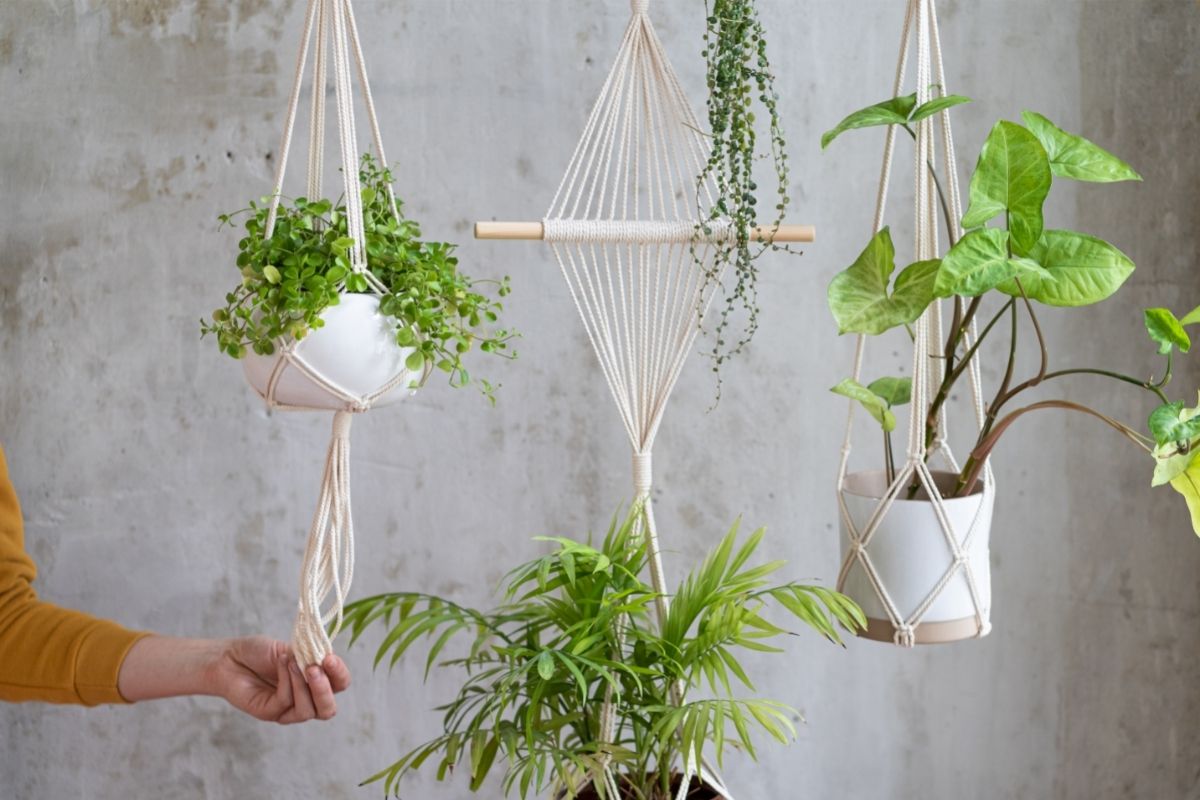
Can I Grow Hanging Plants in Low Light?
To function normally, in addition to carbon dioxide and water, most plants need a more significant amount of light energy, which they convert into their “food” through the process of photosynthesis.
However, some indoor plants native to the tropical areas are accustomed to living in the shade with indirect light and can quickly get used to the living conditions of our apartments and houses, meaning they can live with less light. It also means that you do not have to own a greenhouse or a garden to turn the space you live in into an urban jungle.
As many of us live in apartments that do not get enough light, indoor hanging plants for low light, which will bring into your habitat the benefits of having a green corner introducing a vertical dimension in that same area, are fascinating.
There are not many plants that at the same time enchant with their appearance in hanging baskets and thrive in an environment with indirect light, but we have composed a list of the nine best low light plants for hanging baskets. Here is our list:
Top 9 Hanging Plants for Low Light
1. Pothos (Epipremnum aureum)
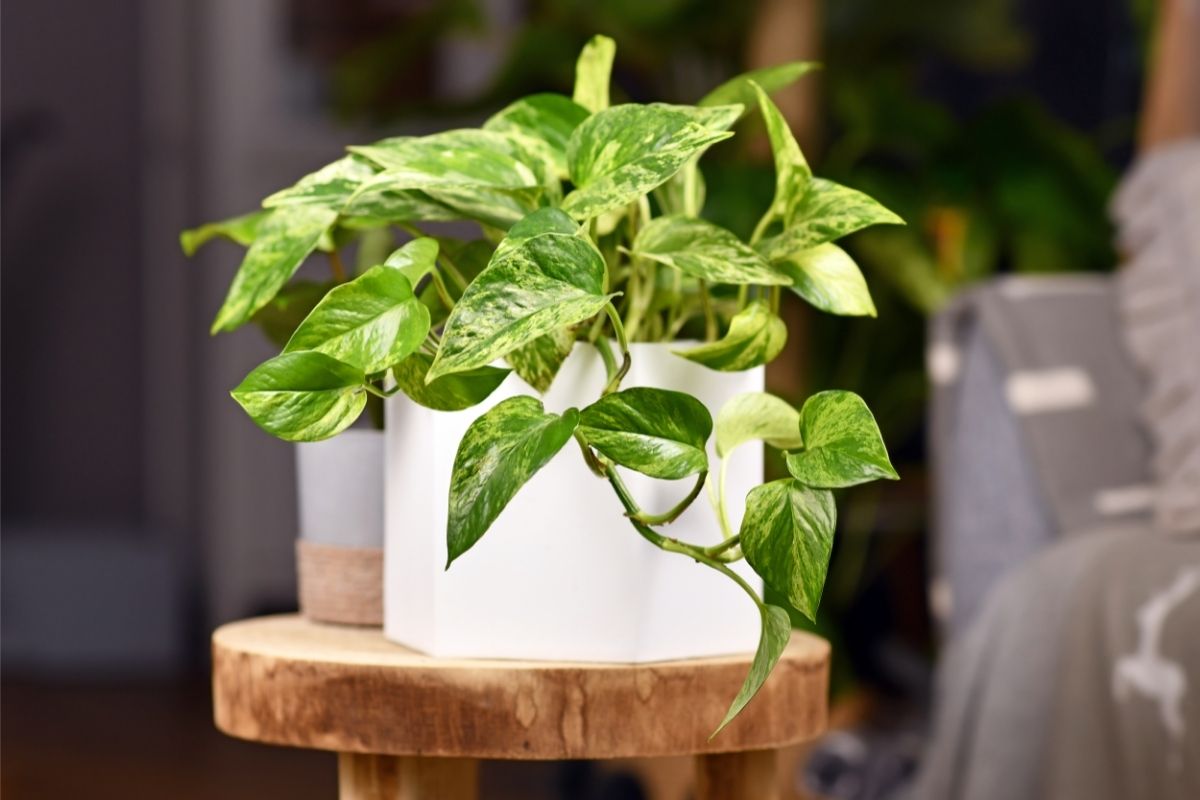
Epipremnum aureum, widely known as pothos or devil’s ivy, is not only one of the best options when it comes to low light indoor hanging plants, but it is also one of the most popular house plants in general.
Its advantage is that you do not have to keep it on the window with a bright light source since it has moderate light requirements and even tolerates low light environments, reduced light surroundings and diffused indirect light.
However, it is significant to emphasize that monochromatic, bright green pothos such as Jade pothos and Neon pothos can stand low light better than variegated ones. The reason for this is the amount of light that the plant receives directly affects the intensity of colors or the expression of patterns.
Therefore, variegated pothos is more suitable for bright indirect light spots. Yet, artificial light can quickly solve the problem and create acceptable conditions!
Still, most classic varieties such as N’joy pothos and Marble Queen pothos retain their green and white patterns even in low-light environments.
Apart from low maintenance, this plant comes in over 50 species with various monochromatic or variegated, shiny heart-shaped foliage.
Another advantage of pothos is that it grows quickly, averaging 12 inches per month in the vegetative phase from spring to autumn. Hence, it quickly turns into a stunning deciduous waterfall, even if it grows in an indirect light environment!
In their natural environment, pothos grows as 20 feet long creeper along with high tropical plants. It can also grow along moss poles or in a hanging basket. It tolerates pruning well, so you can shorten it to maintain the desired length and shape.
In addition, pruning too long shoots stimulates the growth of the new stems making the plant more lush and dense. And, of course, you can use each cut stem to propagate new pothos plants!
If you want to enjoy its long, trailing branches, you do not even have to plant it in a hanging pot! Instead, plant it in an ordinary container, place it in a high spot with indirect light like a shelf or chest of drawers and let it grow along the edge of furniture!
RELATED: Top 9 Hanging Plants For Low Light – The Winning Combination For Tropical Vibe
2. Heartleaf Philodendron (Philodendron Scandens)
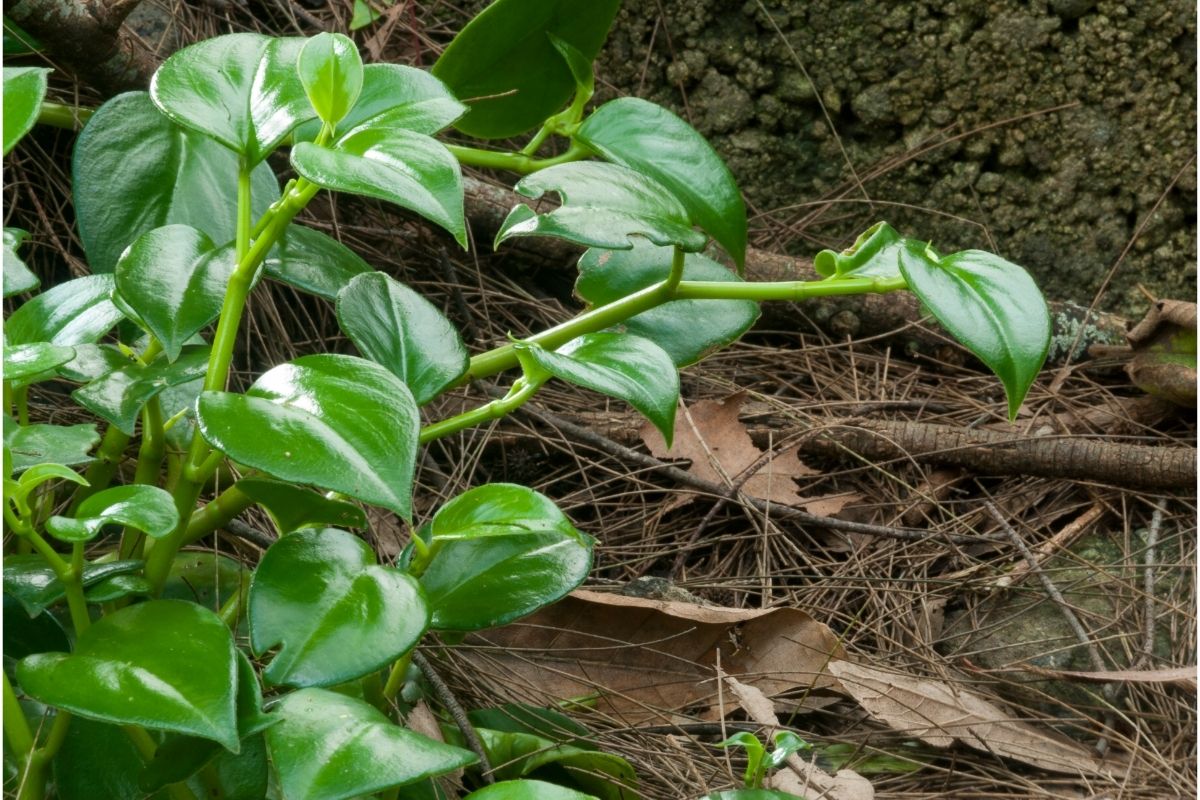
The next plant on our list of best hanging plants for low light is Heartleaf philodendron (Philodendron scadens), also known as the sweetheart plant. It got its name after its dark-green and shiny heart-shaped leaves two to four inches long. The leaves have a beautiful silver hue that disappears as the leaf matures.
In nature, this creeping plant grows in the shade of tall tropical canopies, never exposed to bright sunlight. That is why those beautiful plants with four feet long stems and lovely glittering leaves are ideal candidates in our lists of hanging plants for low light.
Heartleaf philodendron does not like direct light, which damages its leaves, causing them to turn brown and dry out. Therefore, it is best to place it somewhere to receive medium, indirect or filtered light.
Like pothos, philodendron is not too demanding when it comes to caring since it tolerates various living conditions well.
But you should remember that its foliage, which contains calcium oxalate crystals, is poisonous! Therefore you should keep it out of the reach of children and pets.
3. Spider Plant (Chlorophytum Comosum)
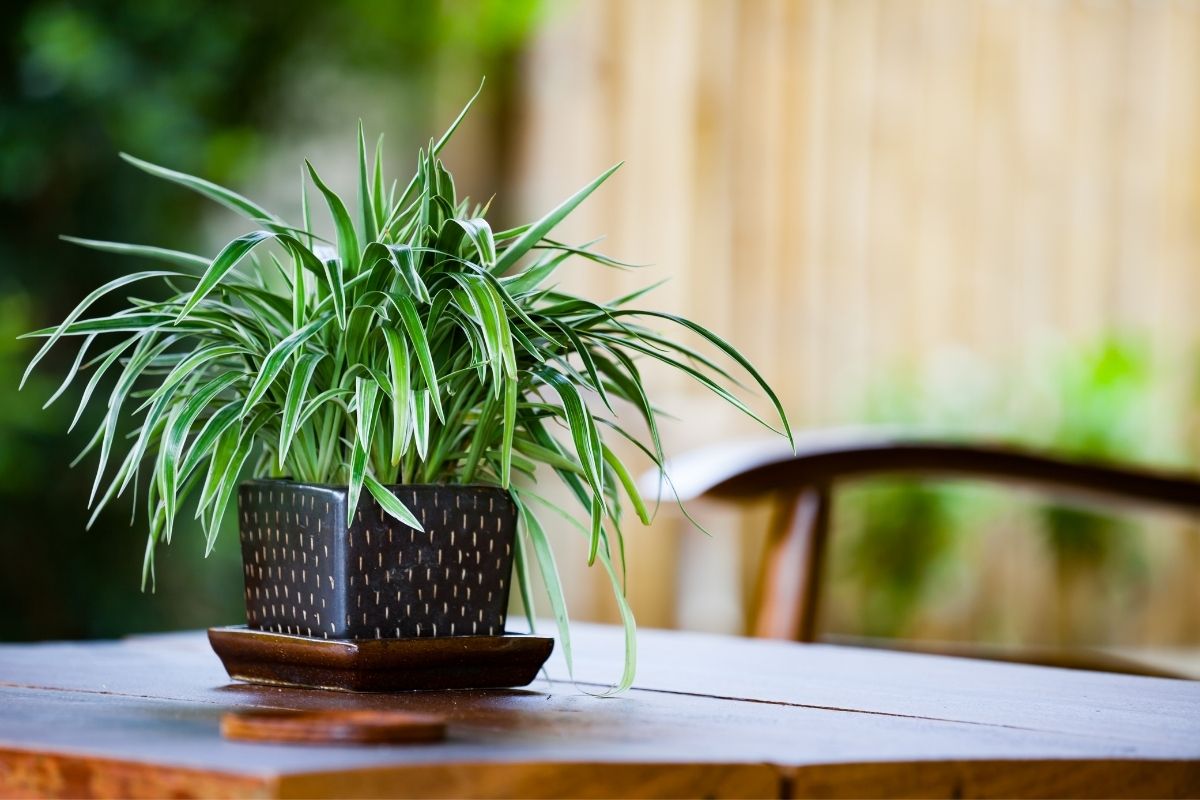
If you are looking for an indoor plant that you can hang and grow in a space that receives lower light levels, a spider plant might be just for you. Spider plant or Chlorophytum comosum is a member of the asparagus family and comes from South Africa.
It looks incredibly charming in a hanging basket due to its elongated, narrowly lanceolate, bright green or green-white leaves, up to 20 inches long.
However, although it grows in almost any location, you should avoid leaving it at the mercy of the direct sun. In such an environment, the leaves burn quickly appear on thin and delicate leaves; the plant slows down growth and may suffer ultimately. Therefore, shaded areas with indirect light are ideal for growing this beautiful plant.
Due to its exceptional adaptability and endurance, it is one of the easiest houseplants to maintain and is a favorite among novice plant growers. In addition, the plant has a thickened rhizome root in which it stores water reserves, so it will not mind if you occasionally forget to water it.
Low maintenance is not the only trump card of the spider plant! It improves indoor air quality by removing harmful compounds such as carbon monoxide, formaldehyde, xylene, and toluene.
If you want to bring a dash of tropical touch into the interior, pairing spider plants’ arching green-white striped foliage with a hanging planter will do wonders for you!
4. ZZ Plant
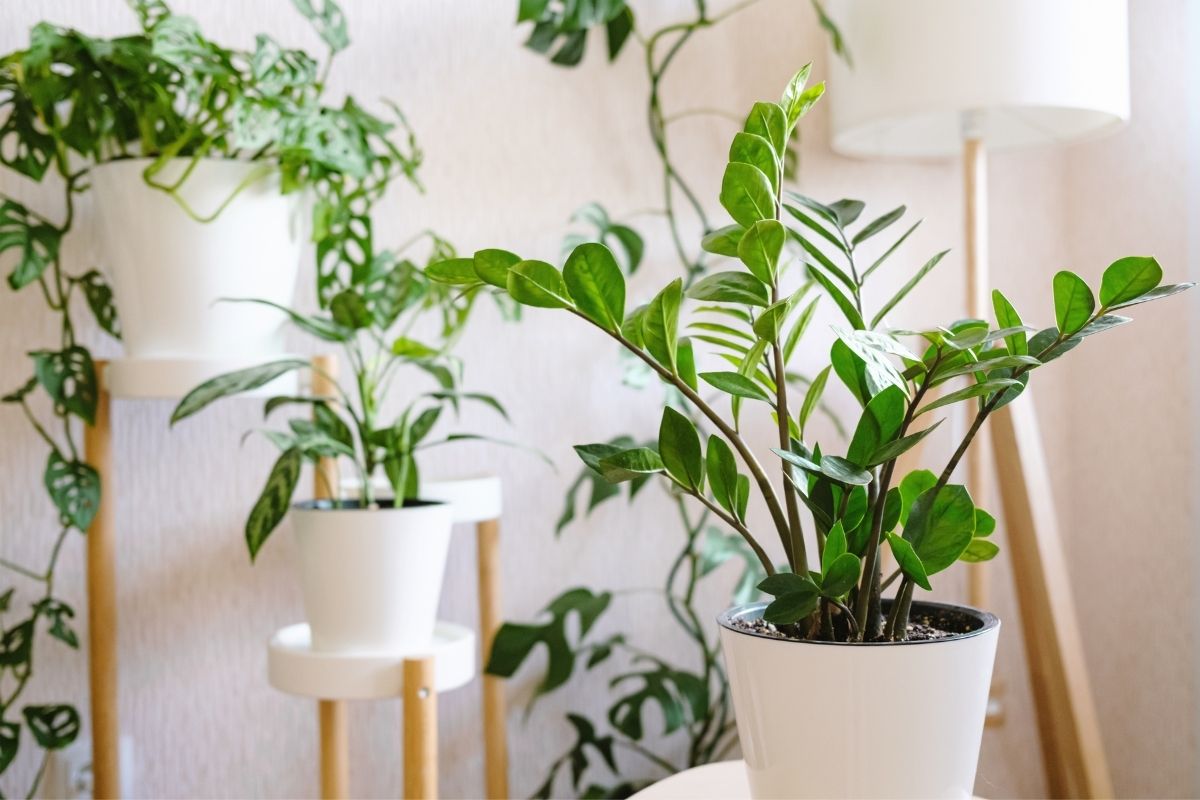
The full name of this plant, which originates from South and East Africa, is Zamioculcas zamiifolia. It is also known as a plant of money and happiness, so many people keep it in their homes.
Although it is not that common to use it as a hanging plant due to its upright growth, it may look more effective in hanging baskets than a creeping plant in some interior combinations.
Zamioculcas zamiifolia is another plant on our list that is not difficult to look after. Its attractive appearance, which is a combination of succulents and ferns, is why it can often be found as a decoration in homes and offices.
The growth of this plant does not require much light, so you do not need to put it in bright sunlight because although this will not interfere with its development, the leaves will begin to lose their dark green color.
Unfortunately, Zamioculcas zamiifolia is a plant that can cause poisoning if some part of the plant enters the digestive tract – additional reason to put it in a hanging basket and keep it out of the reach of children or pets!
RELATED: Truly Tranquil: The Ultimate Guide To Trillium Flowers
5. Peperomia
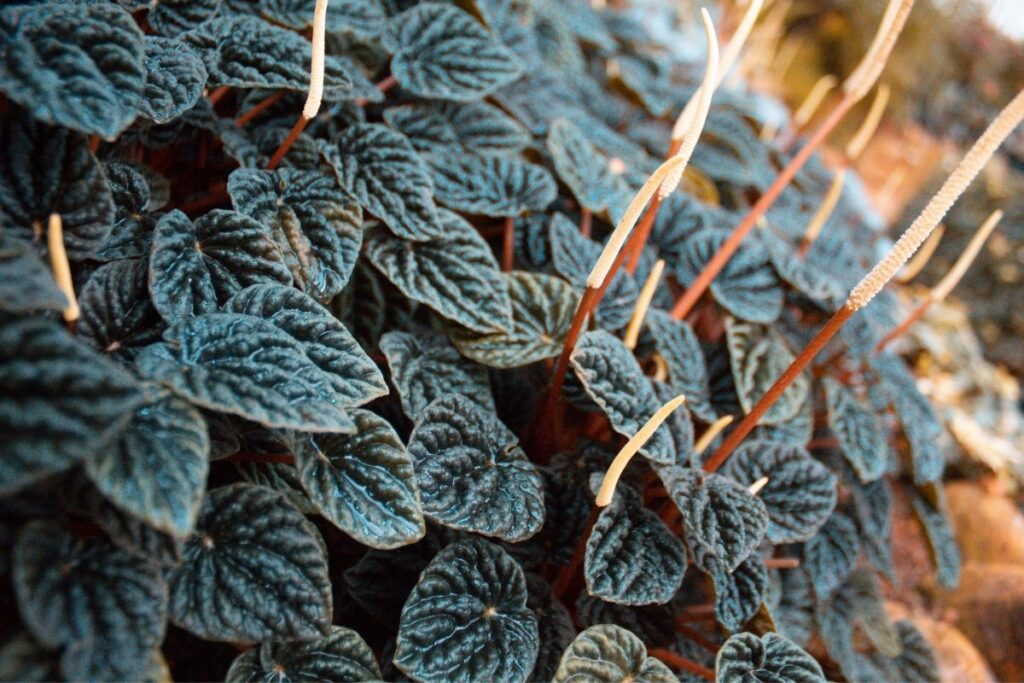
Although the best candidates for the list of hanging plants are those indoor plants whose stems spill over the pot, peperomia’s bushy and round appearance shows that this may not always be the case.
Peperomia is another houseplant that thrives in low-light environments. It belongs to the family Piperaceae and is native to tropical and subtropical regions of Central and South America.
Peperomia comes in many varieties with slightly thick foliage of different colors and patterns. This richness of types combined with smooth, textured, and colored leaves makes them popular among plant owners.
Most peperomias, which are slow-growers, in their maturity reach at most 11 to 12 inches in length and width but some varieties such as Peperomia ‘Ruby Cascade’ will grow to over two feet long.
Peperomia varieties that don’t grow upright but that trail and whose stems will overgrow its container and cascade over it are the perfect choices for hanging baskets placed at the indirect light spots.
Peperomia is a hardy, adaptable and undemanding plant that will thrive in various conditions. Still, like most other plants of tropical origin, it feels best in areas with high humidity, such as bathrooms or kitchens.
But, any place inside your home will do since, except for dry air and excessive watering, peperomia easily adapts to the conditions in which it grows.
6. English Ivy (Hedera Helix)

If you are looking for a way to bring a touch of natural greenery into your living space, English ivy is the right choice. Unlike the plants mentioned above, common ivy is not a tropical plant since its homeland is Europe. However, the plant in the wild grows in all areas with a continental climate, including North America, Asia and Australia.
In nature, English ivy is a robust and lush climber that can reach 80 feet in length and can be grown both indoors and outdoors. Due to English Ivy’s ability to fully cover houses and trees, the plant is a popular form of a hedgerow.
For home growing, there are numerous cultivars and varieties. However, many of them are dwarf varieties that do not grow as aggressively as their relatives in nature. So, the choice is vast, from those with small three-horned incised leaves to large-leaved densely strung ones.
In addition to the size of the leaves, these cultivars can be in different colors. Some are monochromatic, bright green, dark green, with pronounced lighter ribs, but various variegated species have yellow or white patterns.
No matter what type you have, one is for sure – its evergreen leaves dangling from a hanger plant will ensure you breathe a sense of nature into any indoor living space.
Low light conditions are a natural environment for English ivy, especially for dark green varieties, so you can place it even where many other plants would struggle to survive.
One unusual thing about this plant is that it is medicinal and poisonous at the same time: Adult specimens bloom with tiny white flowers gathered in clusters followed by small berries, which are toxic and should be kept out of the reach of children and animals! On the other side, the extract obtained from its leaves is the main ingredient in many cough syrups due to its antiseptic effect.
7. Wax Plant (Hoya Carnosa)
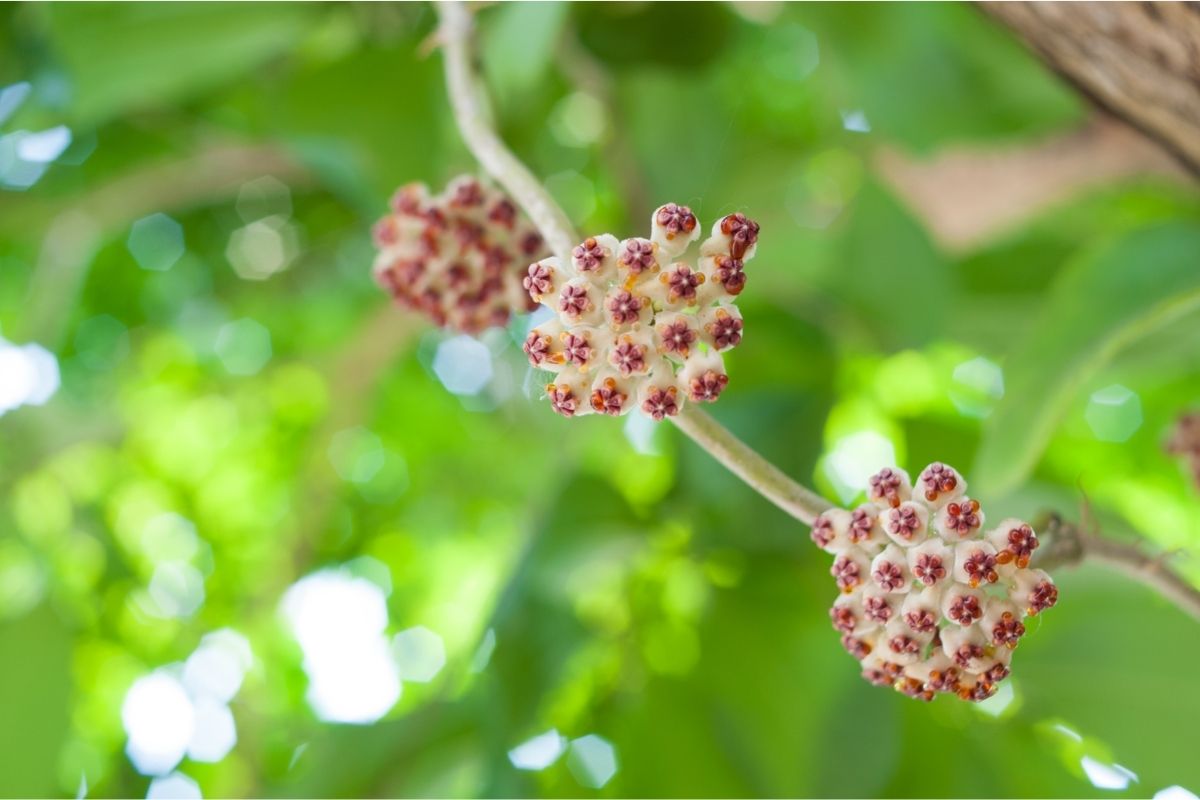
A long-lasting plant that likes warm and humid surroundings and purifies the air, hoya is another excellent option for hanging plants that tolerate low light. Wax plant is both a climber and trailer and is grown for its clustered, star-shaped small flowers with a pronounced red dot in the middle and very decorative and dark green foliage with silver stains.
The flowers grow in a shield-like inflorescence consisting of 10-15 flowers and are fragrant, especially on warmer days, when they emit a scent that resembles the smell of honey. Its lovely inflorescence has a light pink coating that looks like waxy film. It is why hoya is also called a wax plant or porcelain flower.
Although it tolerates low light conditions, those hoyas that get medium to bright indirect light will give better results in producing gorgeous creamy flower clusters.
Yet, don’t let that discourage you. Hoya is an extremely hardy plant, but making hoya bloom is an entirely different pair of shoes since sun exposure is not the only factor that stimulates its blooming! A sufficient amount of light is still no guarantee that your hoya will bloom.
However, even without flowers, its shiny, leathery leaves with pointed tips on long branches look beautiful enough, so flowering is just a bonus you can only hope for after five or more years when the plant becomes fully mature!
8. Chinese Evergreen Plant (Agleanoema)
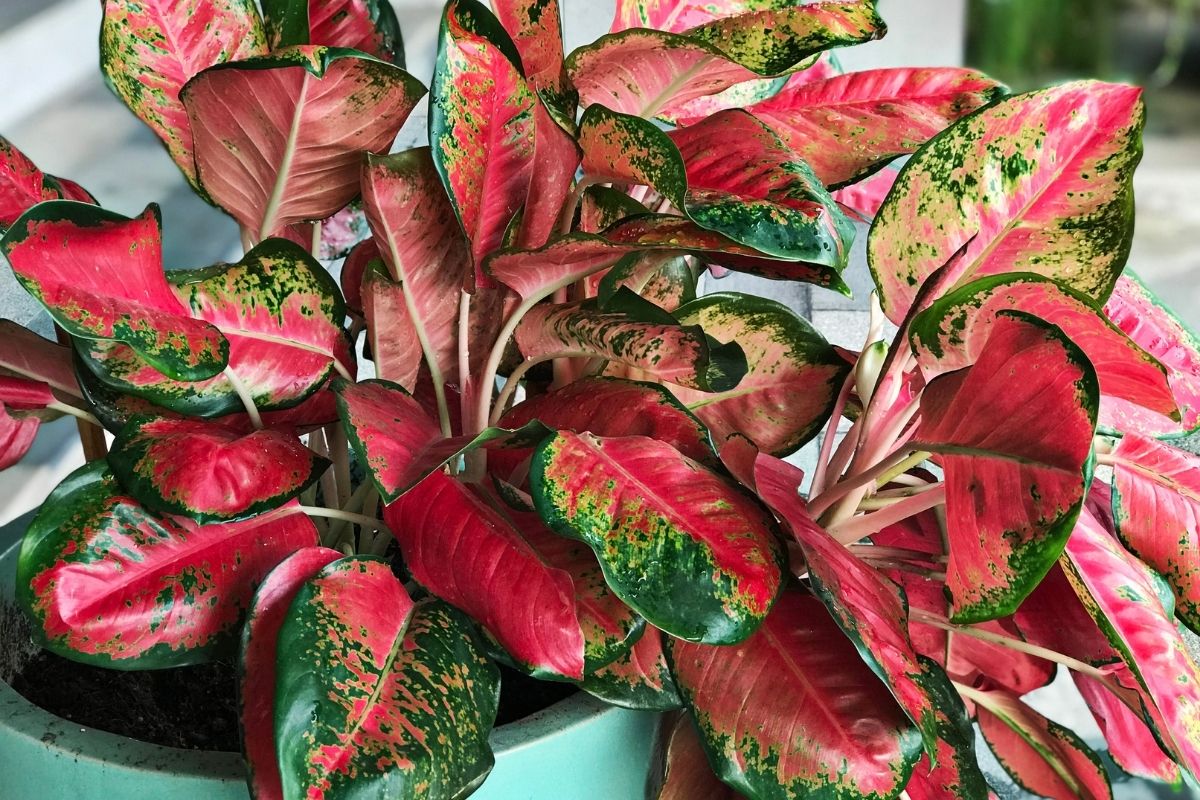
If there is a plain-looking corner hidden from the sun’s direct rays, consider hanging a Chinese evergreen plant there as it will brighten up not just that corner but the whole room. Along with philodendron and pothos, Chinese evergreen is another plant from the Araceae family to appear on this list of best hanging low light plants.
Its exotic and delicate-looking foliage is definitively its calling card. The foliage is responsible for its botanical name, Aglaonema. This name, derived from the Greek words aglaos (bright or light) and nema (thread), could roughly be translated as bright or shining thread. The more popular English name is Chinese evergreen suggesting the Chinees people being the first to cultivate it.
The Chinese evergreen plant likes spots in shady places because of its tolerance to low light levels. But, it is not resistant to low temperatures, so you need to make sure the location you will place it is warm enough to ensure the best growth.
Although it has a primarily decorative function, this plant also absorbs contaminants from plastics, carpets, and wall paints. Its dense plant fibers serve as filters that trap harmful molecules. Therefore, it is an excellent green natural air purifier for homes and offices.
9. Red Prayer Plant (Maranta Leuconeura Red)
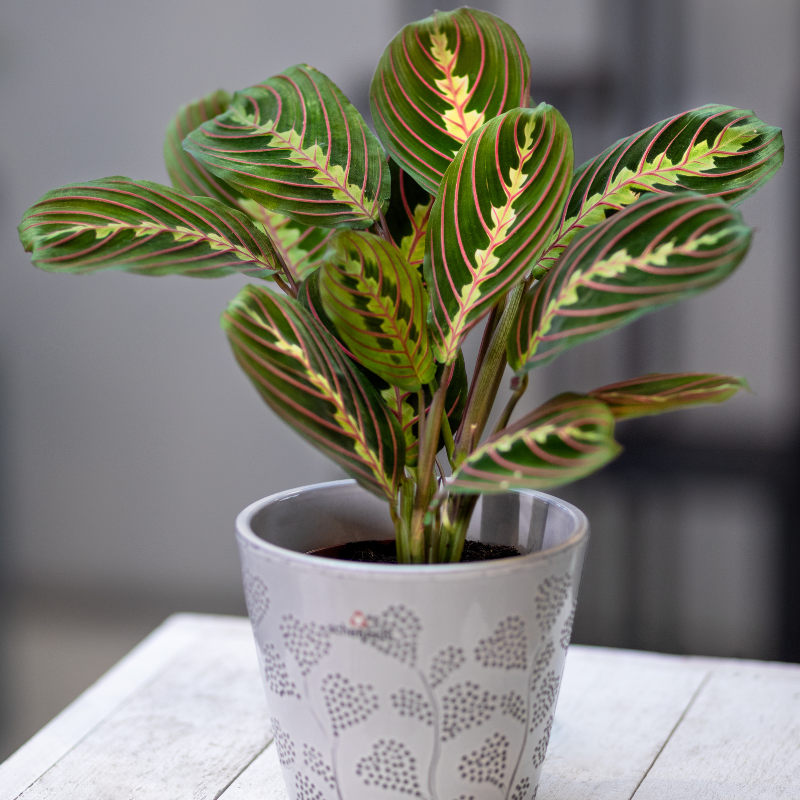
We are finishing our list of best hanging plants that thrive in low-light settings with the red prayer plant. This tropical charmer from Brazil is an increasingly common interior decoration that grows and looks good in ordinary pots placed on the floor and shelves. However, it is best suited for hanging pots.
When maranta is in its early stages, it has only a few leaves, so it does not look like an excellent candidate for hanging baskets. However, maranta is a creeping plant, and as its new leaves grow, it increasingly takes on the appearance of a hanging plant.
Maranta is also distinguished for its foliage’s attractive look and exciting movement. Its leaves are dark green with a light green center, while the back of the leaf is entirely pinkish purple.
Foliage is flat and lowered during the day, but it curls upwards in the evening, giving the impression that the plant is praying – hence the name.
The plant is also known as a herringbone plant because its veins follow a fishbone pattern.
The combination of the movements of its leaves that seem to never be in the same position with the effect of the leaves’ colors is the reason you will reach for it the next time you buy a new houseplant.
Just remember that maranta is not a fan of direct light as it prefers semi-shady, medium indirect light, or low light places! It also likes soil slightly moist but not soggy, so do not keep it thirsty for too long!
Useful Tips
Please Do Not Overdo It With Watering!
In conditions of indirect and reduced light, water evaporates more slowly from the substrate, so indoor plants in such places are watered less frequently than those more exposed to the sun.
Therefore, no matter what type of plant it is, it is always better to wait for the substrate to dry to a depth of one to two inches and only then water it. Overdoing and moist soil usually leads to root rot and plant decay!
Mist Your Plants Regularly!
Except for English ivy, all listed indoor plants on our list are tropical plants that love indirect light, heat, and humid air. The easiest way to give them extra moisture is to spray the leaves regularly or install a humidifier that will do the job for you.
Prune Your Plants Freely!
All these plants tolerate pruning very well, so do not hesitate and shorten them at the end of each season, but also earlier if you notice that the plant becomes leggy and develops fewer leaves due to low light conditions.
Frequntly Asked Questions
Can you have a plant in a room without windows?
Most of the plants listed above can grow in a room without windows or natural light at all, provided you apply artificial lighting for at least 16 hours a day!
Can cactus live in a dark room?
Cacti are sun lovers and need at least four hours of direct light a day! Although some species such as zebra cactus or Christmas cactus can tolerate low light conditions, most will suffer in shady dark places.
Can succulents grow in a low-light room?
Succulents are undemanding and hardy plants that effortlessly adapt to the conditions in which they live even when these conditions are not ideal. Although most succulents prefer bright direct or indirect light, they can survive the low light conditions.
Discover other plants, read and Find Out How to Save a Cactus from Changing Color to Yellow or Brown
Types of Naked Ladies Flowers – Three Species Under the Same Name







